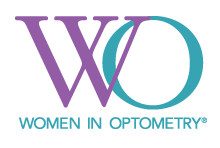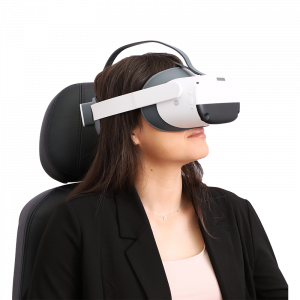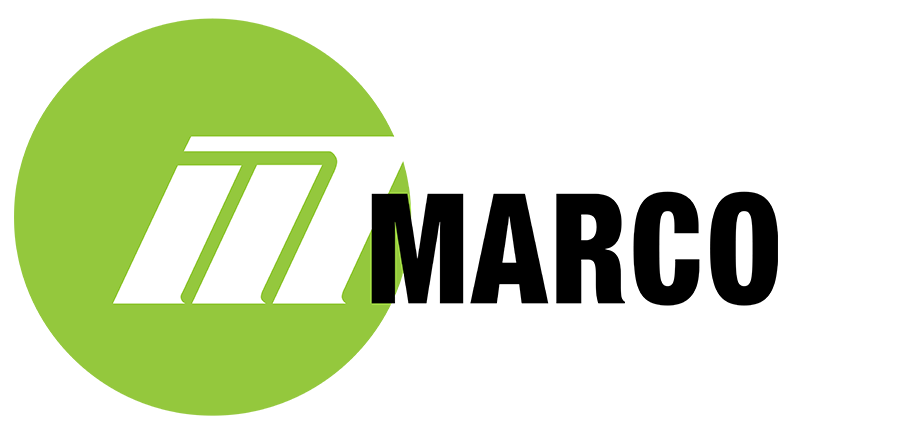
Original Article Published in Women in Optometry
–
 Automated system for refractions brings physical relief, too.
Automated system for refractions brings physical relief, too.
Since opening her own practice in 2003, Rachel Tellez, OD, has moved Vision Source Leon Springs in San Antonio, Texas, into a newer location just a few hundred feet away, seen patients grow and bring in children of their own and added an associate OD.
Something that has continually aided the practice’s growth, she says, has been the Marco technologies that bring efficiencies to the exam process. For the first almost 30 years of her career, Dr. Tellez utilized an old-fashioned, bulky phoropter that required her to spend much of her days with her arms outstretched, spinning dials.
Dr. Tellez—a regular at physical therapy with two bad shoulders—read a colleague’s account of using an automated refraction system. A visit to The Exchange®, the Vision Source annual meeting, in 2016, held in her hometown that year, solidified her decision to update her lanes with the Marco TRS-6100 Automated Refraction System with Infinity Remote Software.
“I only updated one lane and kept the old phoropter around in case we ever needed it,” Dr. Tellez says. “It didn’t take me long before I realized we needed the same equipment in our other two lanes. I was never going back.” Rather than relegating her other exam lanes to
second-tier status because she didn’t OD want to use them, she added the Marco equipment to both. The advantages were immediate.
THE WOW FACTOR
Patients who have been seeing Dr. Tellez for years are able to experience some of the high-tech instrumentation. Every patient sits at the Marco TRS, so they all appreciate the change from the stress of having to answer questions about clarity of numbers.
FASTER REFRACTIONS
With the process of obtaining the refractive correction more quickly, Dr. Tellez and the patient have more time to talk about other ocular health issues, the need for backup eyewear, dry eye treatments or other concerns the patient may have. Or the patient is able to get into the optical area faster to pick out their new eyewear.

MORE DATA, MORE QUICKLY
With the OPD-Scan III Wavefront Aberrometer and the VisuALL virtual reality visual field perimeter, Dr. Tellez captures more information on each patient. The systems talk to each other, so staff members don’t have to load data manually. And Dr. Tellez has all the topography and perimetry data right on her screen.
Since the VisuALL system is portable and allows the user to perform several tests without having to move the patient from one machine to another, that system has also sped up the data-gathering process. “Within a minute or less, the refraction, keratometry and topography are all on one screen, showing both eyes, much faster than compared to performing these tests with three separate instruments,” Dr. Tellez says.
She easily can find results that are automatically saved onto a data card and then transferred into the TRS. “We don’t have to input the data manually, which increases accuracy and definitely saves time,” she says.
PATIENT CHOICE
It’s challenging for any doctor to determine whether a small refractive change means that the patient “needs” new eyeglasses. The OPD screen features side-by-side comparisons so
patients can compare their current prescription to the one she derived that day. This puts the decision on whether new eyewear is worth it in the patient’s hands. Even small
refractive changes can make a big difference to some patients, and if they decide that’s the case, they feel great about buying new eyewear.
SHORT LEARNING CURVE
Dr. Tellez says that technology mastery is not one of her strongest suits, but within 15 minutes of sitting down with her Marco representative, she felt confident with the technology and what it could do. Patients also appreciate how easy it is.
GOODBYE, SHOULDER PAIN
Dr. Tellez can operate the autorefraction system by tabletop console, so she can relax her body. The shoulder pain that bothered her has completely disappeared, she says.
Advanced technology not only makes patients more confident in the care they receive, Dr. Tellez says, but it also ensures she is giving her patients the most appropriate options. “These patients are getting a more in-depth exam, and it’s easier on me and my team,” Dr. Tellez says.
Hearing about the experiences that her colleagues have had with products and technologies gave Dr. Tellez the push she needed to learn more. She’s grateful she listened and cannot imagine still practicing the way she did just a few years ago.

